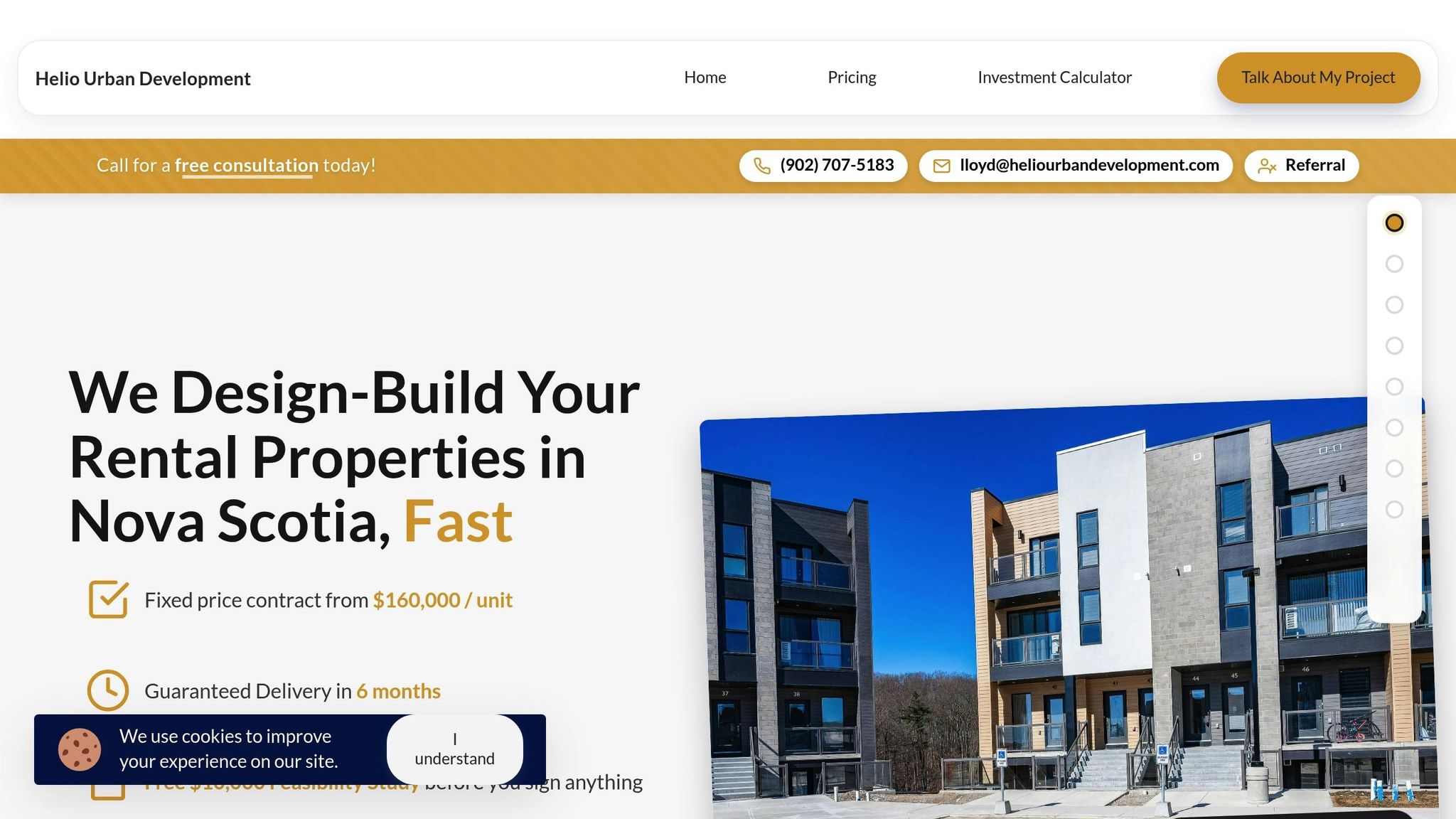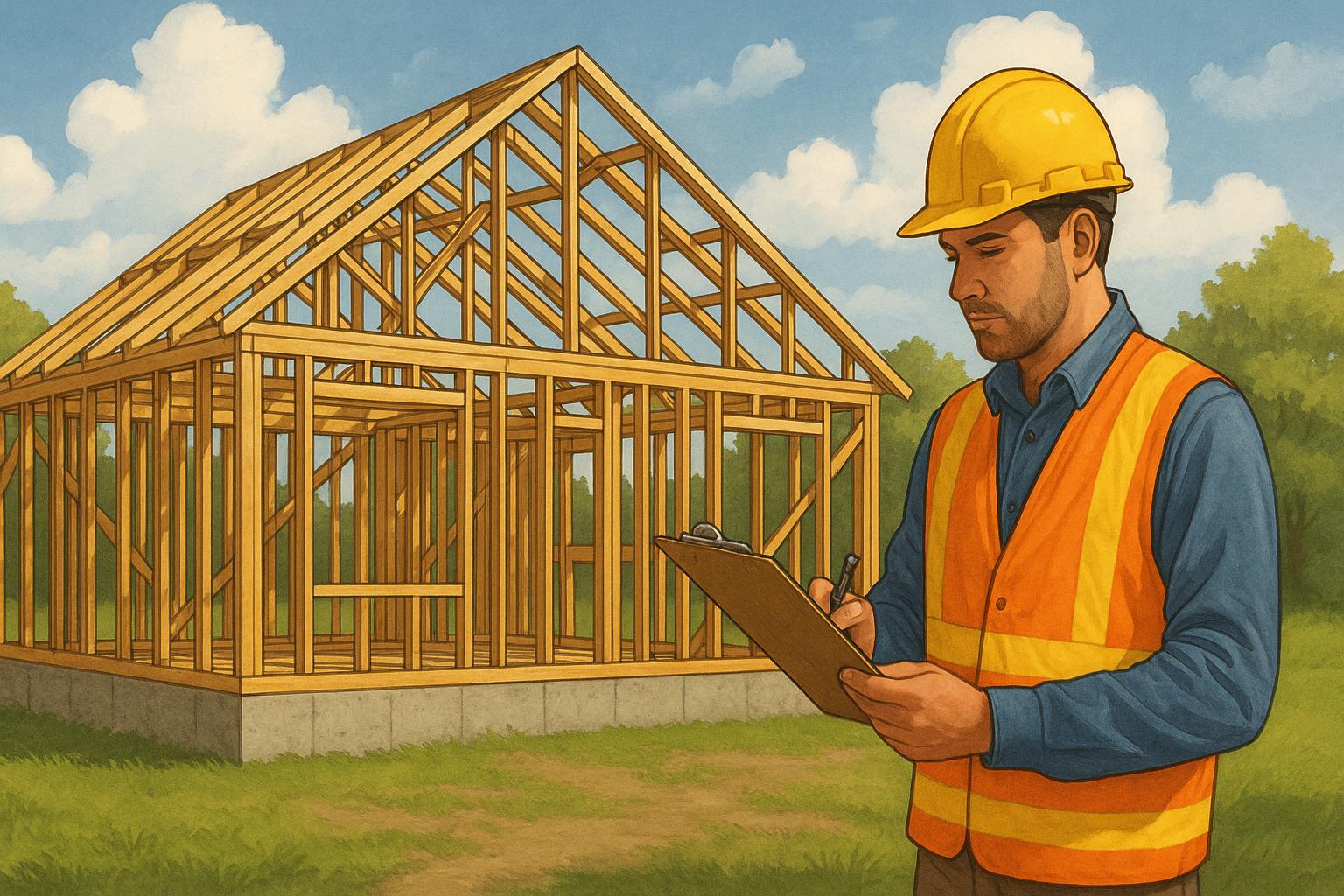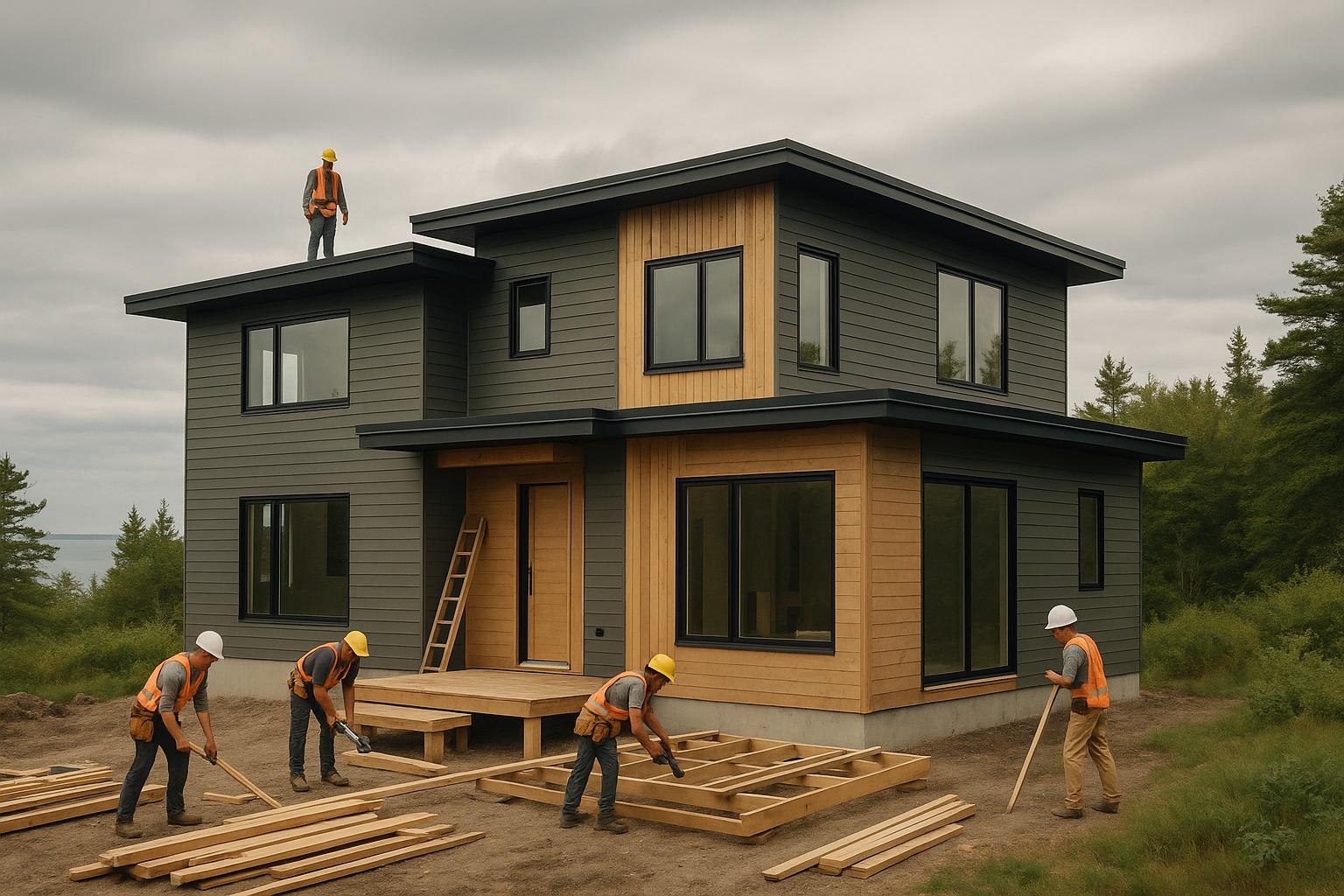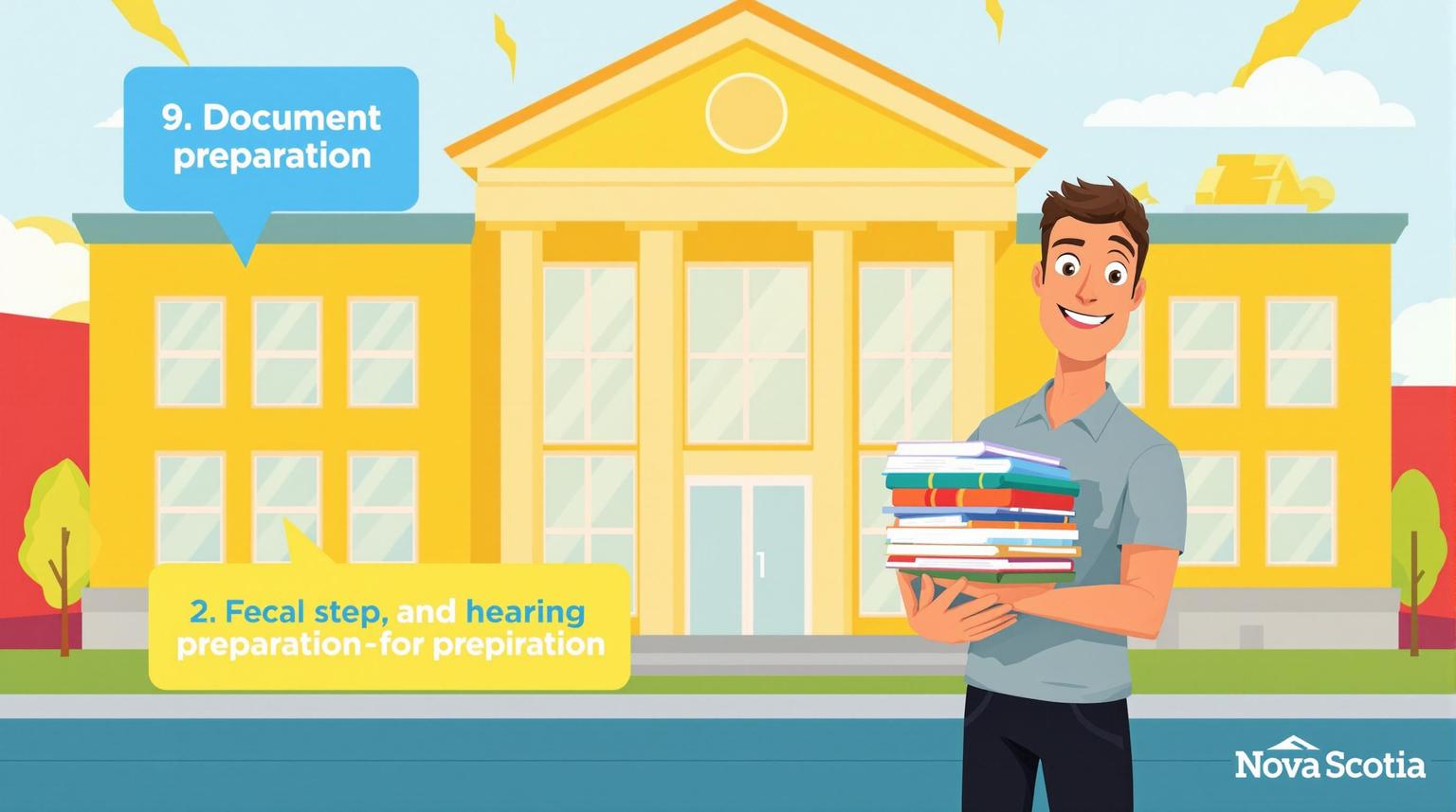If you're looking to expand a rental property in Nova Scotia, ER-2 zoning offers flexible options for increasing housing density while staying within established neighbourhood guidelines. Here's what you need to know:
- Permitted Builds: Single-family homes, duplexes, triplexes, backyard suites, small apartment buildings (up to 8 units), and townhouses.
- Setback Rules: Front setback is 6.0m, side setbacks range from 1.25m to 4.5m, and rear setbacks range from 0.5m to 4.5m.
- Height Limit: Maximum height is 10.7m (roughly 2.5 storeys) for multi-unit dwellings.
- Lot Coverage: Buildings can occupy up to 40% of the lot area, depending on location.
- Parking: One parking space per unit is typically required.
Key Takeaway: Understanding these rules ensures smoother approvals and maximizes your property's potential. Integrated design-build approaches can help you navigate zoning requirements efficiently, saving time and money.
How to Quickly Look Up Zoning in Halifax, Nova Scotia
ER-2 Setback and Height Rules for Additions
The ER-2 zoning rules outline the boundaries for building additions, including setbacks and height limits. Here's a breakdown to help you understand the requirements and plan your project effectively.
Required Setback Distances for ER-2 Properties
Setbacks are the minimum distances between your addition and the property lines. These rules shape the size and placement of your buildable area.
- Front setbacks: Your addition must be at least 6.0 metres away from the streetline [1]. This ensures the neighbourhood maintains its visual appeal and allows space for landscaping and parking.
- Side setbacks: Depending on your lot and the type of addition, the required distance ranges from 1.25 to 4.5 metres [1]. Smaller additions typically require the minimum of 1.25 metres, while larger distances may apply in specific areas.
- Rear setbacks: These range from 0.5 to 4.5 metres [1], offering flexibility for property owners to maximize their buildable area while maintaining proper distance from neighbouring lots. A smaller rear setback is particularly useful for adding units to an existing structure.
Combined, these setbacks create a "buildable envelope" - the three-dimensional space where construction is allowed. Understanding this early in your planning can save you from unexpected design revisions down the line.
Maximum Height Limits for ER-2 Additions
Height limits in ER-2 zones are capped at 10.7 metres for multi-unit dwellings with one to four units [1]. This height typically translates to about two and a half storeys.
The height is measured from the grade level and includes all structural components, such as mechanical systems and roofing materials. Keep in mind that the usable interior space may be slightly less than the total height. Some areas may have different height restrictions, so always confirm the specific rules for your property.
Other Building Requirements
In addition to setbacks and height limits, other factors like lot coverage, minimum lot area, and parking play a role in shaping your design:
- Lot coverage: In ER-2 zones, buildings can cover up to 40% of the lot area, though this can range from 35% to 50% in some special areas [1]. For example, a 500-square-metre lot allows a maximum building footprint of 200 square metres at 40% coverage.
- Minimum lot area: A minimum of 325 square metres is required for multi-unit dwellings [1].
- Parking requirements: Typically, one parking space per unit is needed.
Adhering to these rules ensures your project aligns with municipal bylaws, helping you avoid delays in obtaining permits [2].
Below is a quick reference table summarizing the key requirements:
| Requirement | ER-2 Zone Standard | Range/Notes |
|---|---|---|
| Front Setback | 6.0 metres | Fixed minimum from streetline [1] |
| Side Setback | 1.25 metres | Up to 4.5 metres in special areas [1] |
| Rear Setback | 0.5 metres | Up to 4.5 metres typically [1] |
| Maximum Height | 10.7 metres | For 1–4 unit dwellings [1] |
| Lot Coverage | 40% | Range of 35–50% in special areas [1] |
| Minimum Lot Area | 325 sq. metres | Required for multi-unit dwellings [1] |
How to Design Multi-Unit Additions That Meet ER-2 Rules
Designing multi-unit additions within ER-2 zoning rules calls for careful planning to ensure compliance while maximizing rental opportunities. The trick lies in understanding your buildable envelope and choosing configurations that align with your property’s potential.
Making the Most of Limited Space
Focus on permitted dwelling types that align with ER-2 regulations. Options like two-unit dwellings, semi-detached homes, secondary suites, or backyard suites all offer unique advantages based on the size of your lot and existing structures [1].
Maximize your building footprint by using all the allowable lot coverage within the zoning guidelines. Every square metre of additional space can increase your rental income.
Utilize vertical space effectively by building up to the maximum allowable height of 10.7 metres [1]. This height can accommodate two full storeys, and you might even add lofts or basement suites to make the most of the space.
Plan within setback boundaries to take advantage of the largest possible buildable area. ER-2 rules require minimum setbacks of 1.25 metres for side yards, 6.0 metres for the front, and 0.5 to 4.5 metres for the rear [1]. By carefully positioning your addition, you can maximize usable space while staying compliant.
Design efficient layouts that stack units and share utilities like plumbing and electrical systems. This can reduce construction costs and make it easier to serve multiple units with shared infrastructure. Vertical stacking is especially practical, as it allows you to fit more units without expanding the building's footprint.
Real Examples of Approved ER-2 Additions
Rear yard additions and backyard suites are popular solutions for ER-2 properties. These structures can add one or two units while maintaining the aesthetic and functionality of the main dwelling. With separate entrances and utilities, these suites appeal to tenants who value privacy.
Basement conversions paired with upper-floor additions take full advantage of height allowances. By converting a basement into a rental unit and adding a second storey, you can significantly boost rental income from a single-family property without exceeding height restrictions.
Internal subdivisions of larger homes offer another effective option. Older homes with spacious interiors can often be redesigned to create two-unit dwellings, maximizing the use of existing space without requiring major exterior changes.
Why Integrated Design-Build Works Better
An integrated design-build approach can make the entire process smoother and ensure compliance with ER-2 rules. Traditional construction methods, where architects, engineers, and contractors work separately, often lead to miscommunication and compliance issues. This fragmented approach can result in costly delays when design conflicts arise during permitting or construction.
Integrated design-build firms simplify the process by managing zoning compliance from start to finish. With a single team overseeing setbacks, height limits, and lot coverage requirements, you reduce the risk of errors or delays.
Cost certainty is another advantage of this approach. Unlike cost-plus methods, which can lead to unexpected expenses when designs need adjustments, a fixed-price model accounts for compliance costs upfront, helping you stay on budget.
Faster approvals are often possible when working with firms experienced in multi-unit projects. These teams understand local municipal requirements and can address potential concerns before they arise, streamlining the approval process.
Systematic project delivery ensures a smoother experience. Instead of juggling multiple contractors and hoping for the best, a design-build team familiar with ER-2 projects can anticipate challenges and integrate solutions into the timeline, keeping your project on track and stress-free.
Getting Municipal Approval for ER-2 Additions
Securing municipal approval is a critical step in ensuring your ER-2 addition complies with zoning regulations and moves seamlessly from the planning stage to construction. While the process may differ slightly between municipalities, the fundamental steps and requirements are generally consistent across Nova Scotia. Understanding these details can help you avoid unnecessary delays and complications.
Step-by-Step Approval Process
Start with a pre-application consultation. Many municipalities offer informal meetings with planning staff to discuss your proposed addition before you file any formal applications. These consultations can help flag potential issues early and clarify how local ER-2 regulations are interpreted.
Once you're ready, submit your permit application, including all necessary documents and fees. Municipal staff will then conduct a technical review. If your project involves variances, public notifications may also be required. After the review, you'll receive a decision - this could be an approval, a conditional approval, or a rejection.
To strengthen your application, ensure you have detailed documentation that clearly demonstrates compliance with all ER-2 zoning and building requirements.
Documents and Studies You Need
Your application package will need to include several essential documents and, in some cases, specific studies:
- Site Plan: This should detail property boundaries, existing structures, proposed additions, setback distances, and lot coverage calculations. Ensure these drawings are prepared to scale by a qualified professional.
- Architectural Drawings: Include floor plans, elevations, and cross-sections that show how the addition integrates with existing structures. These should also confirm adherence to height restrictions and building code requirements.
- Engineering Reports: For larger or more complex projects, structural engineers may need to assess foundation requirements and overall stability, while civil engineers evaluate drainage and servicing. These reports can add to the cost but often prevent delays during construction.
- Environmental Assessments: For properties near wetlands, steep slopes, or sensitive areas, these studies evaluate drainage, vegetation, and potential impacts on neighbouring properties. The scope of the assessment depends on the specifics of your project.
- Parking and Traffic Studies: If your addition involves multiple new units, these studies may be required to confirm sufficient parking and assess the impact on local traffic, especially in denser neighbourhoods.
Having these documents ready and accurate is a key step toward a smoother review process.
How to Avoid Delays and Rejections
To keep your project on track, consider these strategies:
- Engage Early with Planning Staff: Early discussions can help you understand local priorities and address potential issues upfront. Some municipalities have informal design preferences or guidelines that, while not explicitly part of zoning bylaws, can influence approval decisions.
- Submit a Complete Application: Double-check that your application includes all required documents. Incomplete submissions are one of the most common reasons for delays.
- Communicate with Neighbours: Reach out to adjacent property owners before filing your application. Addressing their concerns about issues like privacy, drainage, or parking can help prevent objections that might slow down the process.
- Stay Within Clear Compliance Margins: Instead of pushing zoning limits, design your project with a buffer beyond the minimum requirements for setbacks and height. This approach reduces the risk of disputes or misinterpretations during the review.
- Work with Experienced Professionals: Hire professionals who are familiar with local municipal processes and have established relationships with planning staff. Their expertise can help anticipate and resolve potential issues early.
- Prepare Alternative Designs: Have backup plans ready in case your initial proposal faces objections. Flexibility in unit layouts, building height, or exterior materials can help you address concerns without starting over.
sbb-itb-16b8a48
Why Choose Integrated Design-Build for ER-2 Projects
When it comes to ER-2 projects, precision is the name of the game. Building multi-unit rental properties in these zones means navigating a maze of zoning rules, design specifics, engineering demands, and construction timelines. Traditional construction methods often leave property owners juggling multiple contractors and grappling with unexpected costs. But there’s a better way: integrated design-build.
Integrated vs Traditional Construction Methods
The key difference between integrated design-build and traditional construction boils down to accountability and coordination. In an integrated design-build setup, one company oversees the entire process - from the initial design phase to the final construction. On the other hand, traditional methods require property owners to act as middlemen, coordinating between separate designers, engineers, and contractors.
| Feature | Integrated Design-Build | Traditional Construction |
|---|---|---|
| Pricing | Fixed | Variable, often with overruns |
| Accountability | Single point (one contract) | Multiple parties (many contracts) |
| Timeline | Streamlined, faster | Fragmented, often delayed |
| Change Orders | Fewer, managed internally | More frequent, costly |
| Zoning Compliance | Built-in expertise | Owner must coordinate |
| Owner Involvement | Minimal, guided by one team | High, must manage coordination |
| Risk of Disputes | Lower | Higher |
This streamlined coordination is especially important for ER-2 projects, where zoning requirements like setbacks, height restrictions, and municipal approvals demand seamless communication between design and construction teams. With an integrated approach, these teams work together from the start, catching potential issues early - before they turn into expensive delays.
Faster, Cost-Controlled Builds
Delays in construction don’t just test your patience - they hit your wallet hard. For instance, if a four-unit ER-2 property generates $1,950 per unit monthly, a three-month delay means $23,400 in lost rental income. That’s why speed matters. According to the Design-Build Institute of America, design-build projects are completed 102% faster from start to finish and 61% faster during the construction phase compared to traditional design-bid-build methods.
Cost predictability is another major advantage. Traditional projects typically see cost increases of 5.2%, while design-build projects average only 2.4% in cost growth. For a $640,000 four-unit project, this difference could save property owners $17,920.
Beyond just timelines and budgets, integrated teams excel at navigating ER-2 zoning rules. Their combined expertise in design and construction ensures a smoother path through zoning approvals and compliance. These efficiencies translate into real-world advantages, as demonstrated by local companies like Helio Urban Development.
Helio Urban Development: Local Experts for ER-2 Projects

Helio Urban Development is a Nova Scotia-based company that specializes in integrated design-build for 4+ unit rental properties. Founded by Lloyd Liu and Yuan He, the company has built a reputation for solving the coordination challenges that often derail traditional construction projects.
Their approach includes fixed-price construction at $160,000 per unit, along with a six-month construction guarantee. If they miss the deadline, they pay penalties of up to $1,000 per day. This promise is backed by a robust scheduling system that avoids the delays that can stretch projects from 6-8 months to as long as 12-18 months.
Currently, Helio has 31 units under construction and 131 in planning across Nova Scotia. They serve property owners within a 90-minute radius of Halifax, offering an all-inclusive package that covers everything needed for rental-ready units. This includes features like ductless heat pumps, triple-pane windows, quartz countertops, and engineered hardwood flooring.
For property owners targeting premium rental markets, Helio’s units typically rent for $1,950 to $2,100 per month, delivering 12-20% annual ROI. Their integrated model is particularly effective for ER-2 projects, where zoning and municipal approvals require meticulous coordination between site planning, architectural design, and construction. Instead of managing multiple contractors and hoping they align, property owners get a single, unified team handling everything - from zoning analysis to occupancy permits.
As Lloyd Liu aptly puts it:
"Coordination chaos between 6+ unaligned construction professionals" is a thing of the past with our approach.
For property owners looking to simplify the process and maximize returns, integrated design-build isn’t just an option - it’s the smart choice for ER-2 projects.
Getting the Most Value from ER-2 Zone Projects
When it comes to ER-2 zone projects, success hinges on sticking to zoning rules and making strategic choices. Following these guidelines not only ensures compliance but also helps you maximize your investment returns.
Key Points to Keep in Mind
Stick to setback and height limits within your buildable envelope. These requirements aren’t optional - they’re essential for keeping your project on track from day one.
Each additional unit matters. Skipping even one unit can mean losing about $23,400 annually in rent. Every unit adds significant value, so make sure to maximize your property’s potential.
Complete applications save time and money. Submitting all required documents upfront can speed up approvals, potentially saving you around $7,800 in monthly rental income. This aligns perfectly with the efficiency of an integrated design-build approach.
Your construction method can make or break the project. Traditional methods often involve juggling separate teams of designers, engineers, and contractors, which can lead to miscommunication, delays, and budget overruns. An integrated approach helps avoid these pitfalls by streamlining the process.
Next Steps for Property Owners
To turn these principles into action, follow these straightforward steps:
- Start with a zoning compliance review. Understand your property’s setback and height requirements, along with any unique municipal rules. Addressing these details early can save you from costly redesigns later.
- Choose an integrated design-build partner. Look for one that offers fixed-price guarantees and strict timelines. This eliminates the coordination headaches that can add unnecessary time and expense to your project.
- Prepare your documents early. Having everything ready for submission speeds up the approval process and keeps your project moving forward.
- Factor in the cost of delays. For example, a three-month delay on a four-unit property could cost you roughly $23,400 in lost rental income. A reliable construction timeline isn’t just a convenience - it’s a financial safeguard.
Successful ER-2 projects are built on a foundation of zoning compliance, strategic design, and efficient construction methods. Property owners who embrace these principles - and work with partners who minimize uncertainty - can often see annual returns of 12–20% on their rental properties. On the flip side, ignoring these steps can lead to costly setbacks and missed opportunities.
The next move is clear: verify your property’s ER-2 requirements and choose a construction approach that prioritizes certainty over guesswork.
FAQs
What are the benefits of using an integrated design-build approach for ER-2 zoning projects in Nova Scotia?
The Benefits of an Integrated Design-Build Approach for ER-2 Zoning Projects in Nova Scotia
Taking an integrated design-build approach can bring some clear advantages to ER-2 zoning projects in Nova Scotia. By merging the design and construction phases into one cohesive process, this method can cut project timelines by up to 33% and trim costs by around 6%. Plus, it promotes better communication and accountability, helping to sidestep common issues like delays or missteps during the approval stage.
This strategy is especially helpful when dealing with the specific setback and height rules tied to ER-2 zoning. A unified design-build team allows for the creation of multi-unit additions that not only optimize the number of units but also meet municipal regulations. This streamlined process reduces the likelihood of expensive reworks or application rejections, making it a smart, efficient choice for property owners looking to develop within these zoning parameters.
What are the setback and height rules for adding to a property in an ER-2 zone, and how can I ensure my project gets approved?
In Nova Scotia's ER-2 zoning areas, any additions to buildings must follow strict setback and height rules to secure approval. Generally, structures cannot exceed a height of 11 metres, and setbacks from property lines must meet the minimum distances specified in local zoning bylaws.
To stay on track, it's a good idea to check the zoning requirements with your municipality's planning department and connect with local officials early in the design process. Taking this step early can help you tackle potential issues before they become roadblocks, saving time and preventing delays. Careful planning and sticking to these regulations are essential for a hassle-free approval experience.
How can I ensure my ER-2 property addition gets approved without delays?
Navigating Municipal Approval for ER-2 Property Additions in Nova Scotia
If you're planning to expand an ER-2 property in Nova Scotia, avoiding delays or rejections starts with understanding and adhering to local zoning rules. Key regulations to keep in mind include a maximum building height of 11 metres and setbacks of up to 3 metres (or approximately 10% of your lot's width).
It's a good idea to connect with municipal planning staff early in the process. They can help clarify specific requirements and flag any zoning or heritage concerns that might affect your project. When submitting your application, ensure your plans are detailed, accurate, and fully compliant with the regulations. Addressing potential issues proactively can save time and reduce the risk of costly setbacks during the approval process.



